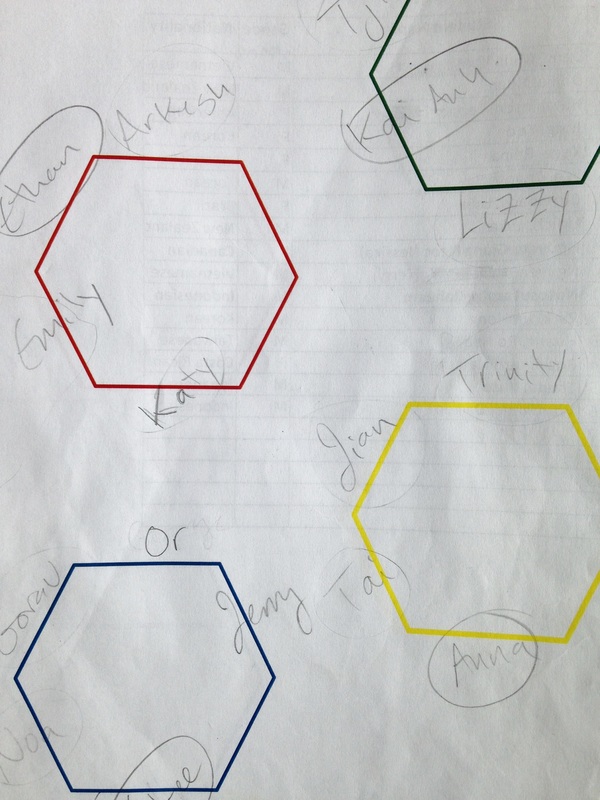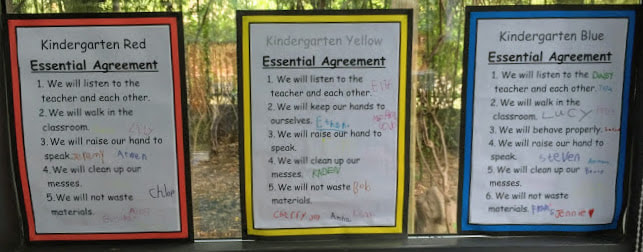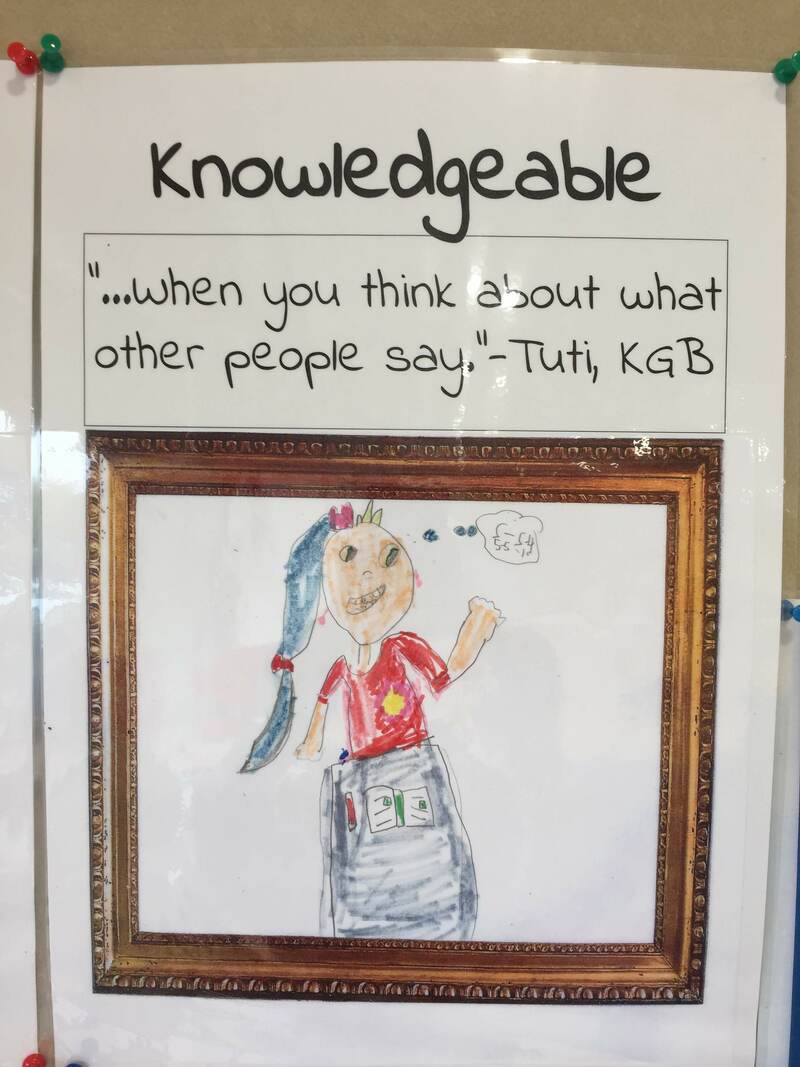My Art room is a structured environment, where the procedures and expectations are consistently enforced, allowing for as much engaging Art time as possible. The classroom "Essential Agreement", or Classroom Rules, are created by the students at the start of the school year, signed by the entire grade as a sort of 'contract', and then posted on the wall at the front of the class as a reminder.
The following procedures are what I do with my current, lower Primary students. With older students, there is more flexibility and a greater expectation of student responsibility:
Entry to Art Room: Students line up outside the Art room, where I meet them at the door. I will then ask "who's ready for Art today?" and the students know that that is their cue to stand quietly, facing me, with their hands at their side. When they're all ready, I'll tell them to walk in quietly and sit on the carpet at the front of the room. I will then walk in and sit in front of them in a low chair. I will look around the room, making eye contact with most of the students. Generally they all settle down and sit quietly, and then I'll say "Good morning, boys and girls" and the students respond my saying "Good morning, Ms. Deborah." That is their cue that class has started. After introducing/discussing the Art project, students are dismissed to their tables.
Assigned Seating: Students have assigned seating at four tables, which helps me to learn their names quickly, and also ensures that their is an even distribution of boys and girls, native and non-native English speakers, etc. One student at each table is the "Table Monitor", which is the designated person to help hand out materials, as well as collect them at the end of class.
Call and Respond Clapping: When I need to stop the students from working to give them instructions, etc, I initiate a 'call and respond' clapping routine, in which I will clap to a certain cadence, and the students stop what they're doing, and repeat the clapping cadence back to me. I might do this 2-3 times, with different clapping routines each time, to ensure that everyone is listening and paying attention. It allows for efficiently quieting the classroom without needing to raise my voice.
Clean Up/Line Up: I will give the students a 5 and 10 minute warnings before it's clean up time, so that they can finish up what they're doing. When it is time to clean up, I'll stop the class with the 'call and respond' clapping routine and give instructions to clean up. I will then give them "10 seconds" until "quiet tables". That is their cue that they have 10 (very long!) seconds to clean up and sit quietly at their table. Generally they scramble to be entirely cleaned up before I count down to 0, which ensures that all the students help in cleaning up.
When I say 'quiet tables' that is their cue to sit quietly in their chairs, without fidgeting or talking. When an entire table is sitting nicely, I'll call that color table to line up, during which the students quietly stand up, push their chairs in, and walk to the door. I might test their memory of color mixing by calling the "orange" table to line up, which means that both the "red" and "yellow" tables can line up at the same time. I'll then ask the first student who gets up to tell the other kids why I called the "orange" table and they'll then explain that red and yellow makes orange. The kids love it when I play this "trick" on them!
The following procedures are what I do with my current, lower Primary students. With older students, there is more flexibility and a greater expectation of student responsibility:
Entry to Art Room: Students line up outside the Art room, where I meet them at the door. I will then ask "who's ready for Art today?" and the students know that that is their cue to stand quietly, facing me, with their hands at their side. When they're all ready, I'll tell them to walk in quietly and sit on the carpet at the front of the room. I will then walk in and sit in front of them in a low chair. I will look around the room, making eye contact with most of the students. Generally they all settle down and sit quietly, and then I'll say "Good morning, boys and girls" and the students respond my saying "Good morning, Ms. Deborah." That is their cue that class has started. After introducing/discussing the Art project, students are dismissed to their tables.
Assigned Seating: Students have assigned seating at four tables, which helps me to learn their names quickly, and also ensures that their is an even distribution of boys and girls, native and non-native English speakers, etc. One student at each table is the "Table Monitor", which is the designated person to help hand out materials, as well as collect them at the end of class.
Call and Respond Clapping: When I need to stop the students from working to give them instructions, etc, I initiate a 'call and respond' clapping routine, in which I will clap to a certain cadence, and the students stop what they're doing, and repeat the clapping cadence back to me. I might do this 2-3 times, with different clapping routines each time, to ensure that everyone is listening and paying attention. It allows for efficiently quieting the classroom without needing to raise my voice.
Clean Up/Line Up: I will give the students a 5 and 10 minute warnings before it's clean up time, so that they can finish up what they're doing. When it is time to clean up, I'll stop the class with the 'call and respond' clapping routine and give instructions to clean up. I will then give them "10 seconds" until "quiet tables". That is their cue that they have 10 (very long!) seconds to clean up and sit quietly at their table. Generally they scramble to be entirely cleaned up before I count down to 0, which ensures that all the students help in cleaning up.
When I say 'quiet tables' that is their cue to sit quietly in their chairs, without fidgeting or talking. When an entire table is sitting nicely, I'll call that color table to line up, during which the students quietly stand up, push their chairs in, and walk to the door. I might test their memory of color mixing by calling the "orange" table to line up, which means that both the "red" and "yellow" tables can line up at the same time. I'll then ask the first student who gets up to tell the other kids why I called the "orange" table and they'll then explain that red and yellow makes orange. The kids love it when I play this "trick" on them!



